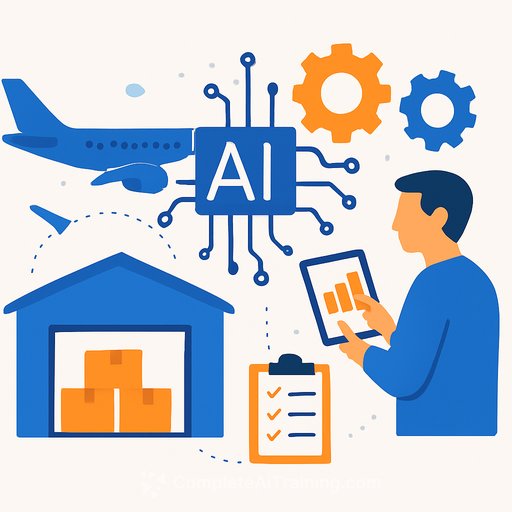India deploys AI to modernise its military operations: what operations leaders can learn
India is integrating AI across its armed forces to sharpen decision speed, reduce downtime, and improve logistics. Strip away the uniforms and you'll see a playbook any operations team can use: clear outcomes, data discipline, human oversight, and tight feedback loops.
Where AI is making a difference
- Intelligence and surveillance: automated image and signal analysis to surface threats faster.
- Predictive maintenance: health monitoring for aircraft, vehicles, and systems to prevent failures.
- Logistics optimisation: demand forecasting, route planning, and inventory right-sizing.
- Decision support: sensor fusion and dashboards that give commanders timely, relevant context.
- Autonomous systems (with human control): navigation, target recognition, and mission support.
- Cyber and electronic warfare: anomaly detection and adaptive countermeasures.
- Training and simulation: AI-driven simulators and wargames to test plans before they hit reality.
Translate this to your operations
- Clarify the mission: define one outcome per workflow (e.g., "cut mean time to repair by 25%").
- Map decisions to data: list the top decisions, the inputs required, and where that data lives.
- Start with decision support: assist people first; automate only when failure is cheap and reversible.
- Build the maintenance flywheel: instrument assets, flag anomalies, schedule fixes before downtime hits.
- Run sims before rollouts: test policies, failure modes, and staffing levels in a safe environment.
- Set guardrails: approvals, audit logs, fallback modes, and clear accountability on every workflow.
- Treat vendors like squad members: small pilots, measurable milestones, and exit ramps.
90-day rollout plan
- Weeks 1-2: Pick two high-friction processes. Write the before/after metrics and acceptance criteria.
- Weeks 3-4: Data audit. Identify sources, quality gaps, access controls, and refresh cadence.
- Weeks 5-6: Build a thin slice. One model, one workflow, one team. No platform sprawl.
- Weeks 7-8: Red-team it. Stress test edge cases, spoofed inputs, and degraded networks.
- Weeks 9-10: Train operators. Playbooks, "what if" drills, and escalation ladders.
- Weeks 11-12: Go/no-go. Ship to a narrow slice, monitor daily, iterate weekly.
Metrics that matter
- Decision latency: time from signal to action.
- Accuracy: false positive/negative rates per use case.
- Readiness: percent of assets mission-capable; maintenance turnaround time.
- Throughput: orders fulfilled per hour, tickets resolved per shift.
- Cost per decision: compute, tooling, and labor vs. outcome gained.
- Safety and compliance: audit completeness, override rates, and incident counts.
Governance and risk controls
- Human-in-the-loop for any high-impact action; automation only with proven reliability.
- Input validation and rate limits to blunt data poisoning and spam.
- Drift monitoring: alert when model performance or data distributions shift.
- Versioning and audit trails: who changed what, when, and why.
- Fallback plans: clear "revert to manual" triggers and procedures.
People, process, platform
Create a small cross-functional team (ops lead, data/ML, domain SME, security). Give them one outcome, a short runway, and the authority to ship. Standardise on a minimal toolset for MLOps, monitoring, and access control to keep maintenance sane.
Policy signals worth noting
Public guidance on responsible AI is maturing. Use it. The NIST AI Risk Management Framework offers practical controls you can adapt to operations without adding bureaucracy.
Apply it this week
- Pick one decision that slows your team down. List the inputs and where to source them.
- Prototype a decision aide in a sandbox. Measure latency and error impact, not just accuracy.
- Write the rollback plan before you ship. If you can't roll it back in minutes, it's not ready.
Further learning for ops teams
If you need structured training for your team, review focused course paths by role and skill.
Bottom line: India's military is using AI to speed up decisions, maintain assets before they fail, and train people with less risk. Do the same in your operation: start small, measure relentlessly, and keep humans responsible for outcomes.
Your membership also unlocks:






